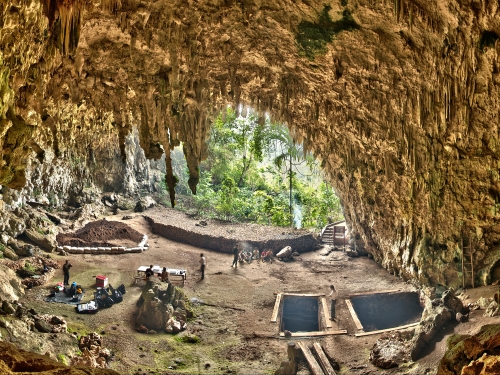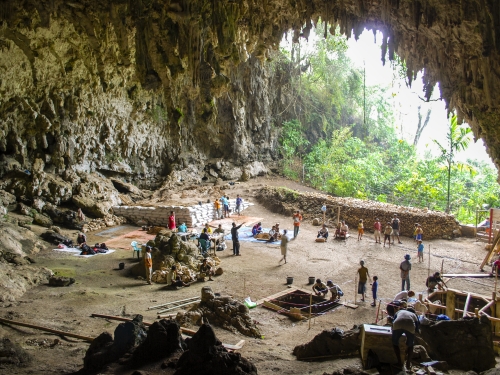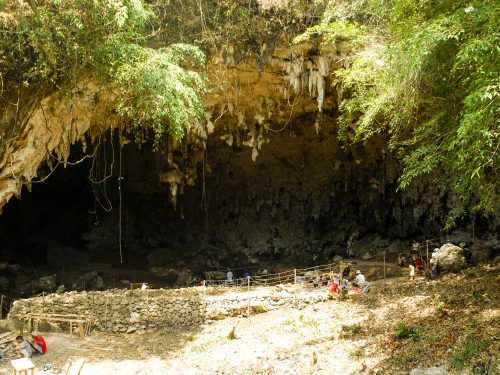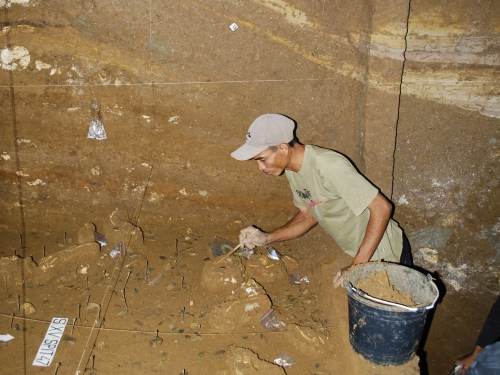Thomas Sutikna, lead author of the new study and an archaeologist from the University of Wollongong in Australia and the National Research Centre for Archaeology in Indonesia, is shown documenting the stratigraphic details of multiple volcanic layers. The thick grayish layer represents a massive eruption dated to about 50 thousand years ago. This tephra sits directly on top of the sedimentary deposits that contain skeletal and behavioral evidence of Homo floresiensis. Eight years of further excavations and study at the Indonesian cave site of Liang Bua have pushed back the time of disappearance of the ‘hobbits’ of Flores (Homo floresiensis) from as recently as 12,000 years ago to about 50,000 years ago—around the same time that modern humans (Homo sapiens) first dispersed through the wider region and reached Australia, according to new findings published in the journal Nature.
Photo credit: Dr. Hanneke Meijer








